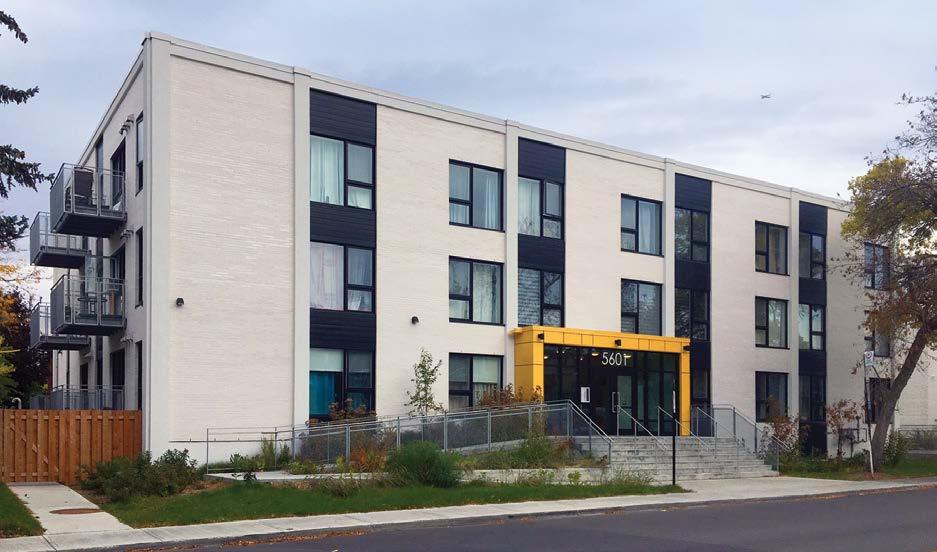
4 minute read
Teaching the Next Generation of Engineers
A veteran engineer provides some advice for mentors.
By David Clark
The COVID-19 pandemic demonstrated we can no longer rely only on how we did things in the past. Old ways and outdated solutions don’t necessarily work in the hybrid engineering workplace and construction industry of the future.
Unexpected shifts will continue to be the norm, as the rate of change accelerates. We need to train up-and-coming engineers to prepare for change and guide them in navigating immense problems, such as climate change. The junior engineers of today will, as leaders, encounter problems we can’t even imagine right now.
How can we mentor junior engineers and equip them with tools to help solve those problems? Higher education doesn’t always teach the skills the industry will need, particularly soft skills that will be highly sought-after in the future.
Here are some ideas.
Build emotional intelligence for working with others
Great design doesn’t happen in isolation. Big problems require complex, multidisciplinary solutions. Encourage mentees to learn about their colleagues’ roles in the design team, so they can understand each other’s needs, goals and perspectives.
By developing their emotional intelligence, especially empathy, mentees will be better able to resolve conflicts, see how their own work and emotions impact others and have the humility to apply course correction when required.
Teach problem solving and curiosity
It is important for junior engineers to learn how to approach problems they’ve never encountered.
Guide them to possible solutions. Has anyone else encountered something similar? Can the problem be broken down? Does going back to first principles help?
Ensure you provide support. Be ready with a lifeline if they appear to be heading down a rabbit hole—and help them figure out what matters and focus their time on those priorities.
Encourage creativity and innovation
Good design is elegant. It could include a mechanical process that uses energy efficiently or a structural system that minimizes embodied carbon. Engineers are naturally creative and we need to understand, value and celebrate engineering design.
Engineers need to be increasingly digitally literate, as computers and artificial intelligence (AI) impact our work. I expect iterative design, for example, which allows engineers to generate and test many solutions in a shorter period, will become increasingly common. Indeed, engineers will likely be co-designing with AIs in the future.
Making the creative leaps required to develop new solutions requires adapting to emerging challenges. I encourage teaching analogue skills, such as sketching on paper and storytelling.
Develop critical thinking
As a junior engineer, I was lucky to work with senior engineers who had an opendoor policy (or rather no-door, as it was an open office). They were prepared to invest time to help me and answer my questions.
In my role now as a leader, I try to apply that approach and investment by helping junior engineers ask questions of multiple colleagues (they may get different, conflicting answers about the best solution), challenge assumptions and critically analyze the information provided to them.
Push for adaptability and resilience
Encourage engineers to get out of their comfort zones. While the industry will need both generalists who can quickly assess problems and specialists with specific know-how, the rate of change will require both types of engineers to re-skill.
Junior engineers should expect more than one mentor over the course of their careers, representing various roles—e.g. project managers, tradespeople, constructors and clients. Mentoring may be formal through their firm (or engineering institution) or informal through networking.
Model good behaviour
As a junior engineer, I learned how to behave by observing others and overhearing conversations. It was professional development by osmosis, whether meeting clients, interacting with design professionals or dealing with contractors on-site.
This is increasingly difficult in a virtual setting, so find opportunities to invite junior engineers to client meetings and site visits. As a mentor, be aware of how you behave and are perceived by others.
Emphasize real projects’ real problems
It is important to understand how our work relates to the real world. Just because you can draw it in 3-D doesn’t mean it can be built! Nothing focuses the mind like being asked, “Who designed this?” on-site by the person trying to build it. Seeing your design being constructed is a critical part of learning practical design skills.
Establish strong communication
Mentors need to get better at supporting mentees. Building relationships can be difficult in a virtual environment; we must look to other opportunities for connection. A dedicated time for interaction, either face-to-face or over video, helps force discussions. With a regular date in the calendar scheduled for a mentor meeting, it’s more likely to happen.
Support a diverse future
A diversity of ideas, opinions and experiences requires diverse mentors, particularly from underrepresented groups. I encourage all engineers to get involved, providing fresh voices and new faces for junior engineers to look up to. Unconscious bias training is a great way to challenge your own assumptions.
Learn as a mentor and mentee
In working with engineering and architec- ture students over my career, I have realized I don’t have all the answers. Their projects are often outside my own experience, novel or very niche. “How many air handling units do you need to inflate an ethylene tetrafluoroethylene (ETFE) roof?” “How much sensible heat does a sheep produce?” “How do I make optically pure ice for an ice hotel chandelier?”
I might not know the answer, but I can help figure out where to look. I usually ask them to come back to me and let me know when they’ve figured it out, so I can learn from them, too.
I’ve yet to meet anyone in the construction industry who knows everything. There’s always new stuff to learn. Be both a teacher and a sponge.










